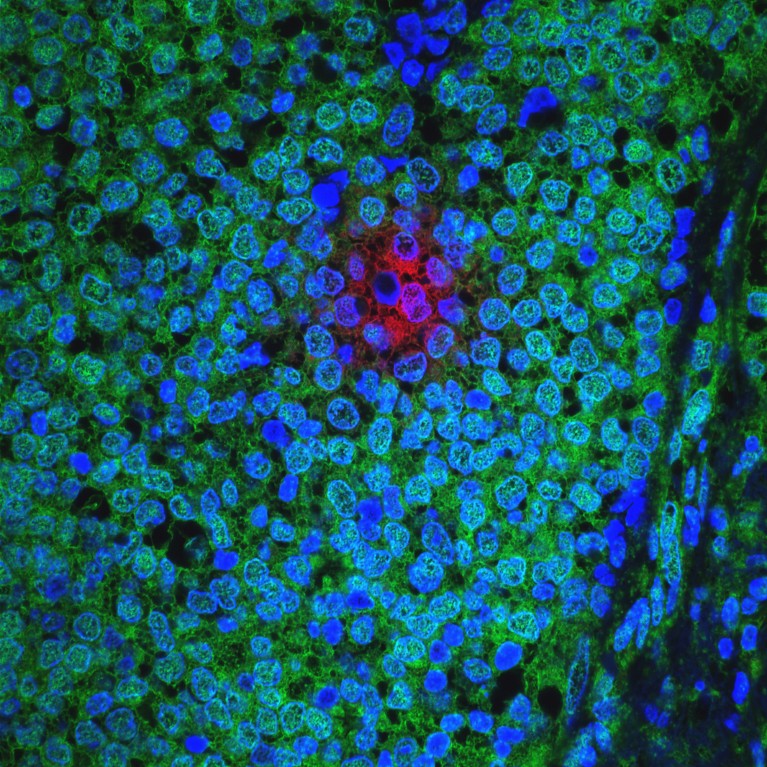Leggi in italiano
Microscopic image of breast cancer cells resisting treatment. Callista Images/ Image Source/ Getty Images.
Researchers in Milan have described how a protein makes cancer cells resistant to radio and chemotherapy. They also showed that this protein is targeted by a drug currently in clinical trials, that could help kill cancer cells without being too toxic for healthy tissues1.
The DNA of cells is continually attacked by all kinds of endogenous and environmental factors. A protein called Rad51 shields it from damage by making up filaments that wrap around the double helix like a cable sheath around an electrical conductor. The Brca1 and Brca2 proteins catalyse the Rad51 filaments, and are necessary to preserve the DNA.
About 70% of all cancer cells are Brca1/2 deficient, so they have no Rad51 sheath to protect the DNA, which makes it more vulnerable to mutations. Each injury opens a gap in the double helix. During DNA replication, as a control mechanism to avoid dangerous mutations, an enzyme called Mre11 destroys DNA strands that show open gaps.
This is where the newly described protein comes into play. In cancer cells polymerase theta, or Pol theta, antagonizes Mre11 by crudely sticking back ruptured strands. “It favours dangerous mutation because its action allows the replication of damaged DNA”, says oncologist, Vincenzo Costanzo, head of the DNA Metabolism Lab at the IFOM Institute for Molecular Oncology in Milan, and senior author of the study.
Polymerase theta is abundantly expressed in Brca1/2 deficient cancer cells and makes them resistant to radio and chemotherapy, because it fills gaps opened in their DNA by drugs and radiation. “It is scarcely expressed in healthy cells”, Costanzo explains.
The Italian researchers cultured Brca-deficient cancer cells and tested on them a molecule that stops the action of Pol theta. The cells died. The inhibitor they used is an analogue of a new drug, called ART4215 and currently undergoing phase 1 and 2 clinical trials in Europe and the USA on patients with Brca-deficient breast cancer. It was developed before Italian scientists made their discovery, and Costanzo’s research sheds light on its mechanism of action. “It is very promising because it induces death only in cancer cells expressing Pol theta,” Costanzo says. “It spares healthy cells, so it’s minimally toxic”.
Depending on the results of the trials — due in several years — clinicians could use the new drug as an adjuvant after radio or chemotherapy to kill resistant cancer cells that eventually survived the primary treatment, or they could use it as a neoadjuvant, to shrink the tumour before surgery.
